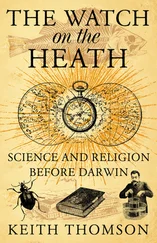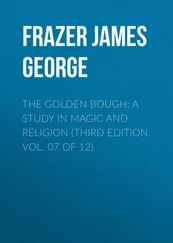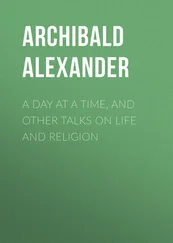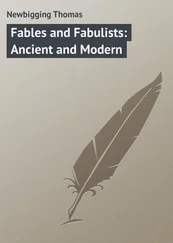Vikernes, Varg - Varg Vikernes - Sorcery and Religion in Ancient Scandinavia
Здесь есть возможность читать онлайн «Vikernes, Varg - Varg Vikernes - Sorcery and Religion in Ancient Scandinavia» весь текст электронной книги совершенно бесплатно (целиком полную версию без сокращений). В некоторых случаях можно слушать аудио, скачать через торрент в формате fb2 и присутствует краткое содержание. Жанр: Старинная литература, на английском языке. Описание произведения, (предисловие) а так же отзывы посетителей доступны на портале библиотеки ЛибКат.
- Название:Varg Vikernes - Sorcery and Religion in Ancient Scandinavia
- Автор:
- Жанр:
- Год:неизвестен
- ISBN:нет данных
- Рейтинг книги:3 / 5. Голосов: 1
-
Избранное:Добавить в избранное
- Отзывы:
-
Ваша оценка:
- 60
- 1
- 2
- 3
- 4
- 5
Varg Vikernes - Sorcery and Religion in Ancient Scandinavia: краткое содержание, описание и аннотация
Предлагаем к чтению аннотацию, описание, краткое содержание или предисловие (зависит от того, что написал сам автор книги «Varg Vikernes - Sorcery and Religion in Ancient Scandinavia»). Если вы не нашли необходимую информацию о книге — напишите в комментариях, мы постараемся отыскать её.
Varg Vikernes - Sorcery and Religion in Ancient Scandinavia — читать онлайн бесплатно полную книгу (весь текст) целиком
Ниже представлен текст книги, разбитый по страницам. Система сохранения места последней прочитанной страницы, позволяет с удобством читать онлайн бесплатно книгу «Varg Vikernes - Sorcery and Religion in Ancient Scandinavia», без необходимости каждый раз заново искать на чём Вы остановились. Поставьте закладку, и сможете в любой момент перейти на страницу, на которой закончили чтение.
Интервал:
Закладка:
9
Then all the powers went
to the seats of the end (i. e. the grave)
the sacred gods,
and agreed;
who should create
the king of dwarves
from the blood of the sea
and from the legs of the blue.
This verse is connected to Ísaz and Hel. A dwarf (Nor. dvergr ) is often misinterpreted as a small manlike creature, but the original meaning was “opening in the ground” or “entrance to the grave (or cave where the dead rest)”. This becomes obvious when we know the feminine form of the word; dyrgjá , from Nor. dyrr (“door”) and gjá (“opening in the ground”). The king of dwarves was in other words the initiated king, who had been in the grave. He was reborn as an initiate from the half blue and half white goddess of the grave. He was reborn from Hel's womb, from between her blue legs; the burial mound. The sea of blood was the blood of the cow that had been sacrificed on the burial mound, only to drip into the grave and turn the women waiting there red.
I can add that this explains how Loki could travel to the underworld and have the dwarves forge the wonderful gifts to the gods. All these items came from the openings in the ground; from the burial mounds of the forebears.
10
There was the one who drank himself to courage
had been most important,
amongst the dwarves,
and the two rested;
the manlike
many completed
dwarves from the Earth
like the rested said.
This verse is connected to Jera and Freyja, the protector of the burial mound. The man going into the ground drank the blood of the sacrificed animal and became initiated. One of the women slept (“rested”) with him several times the time he was there (over the course of three nights). She taught him how to procreate, what to do to make women pregnant, so that many (noble) children would come from her womb.
11
Waxing, waning,
north, south,
east, west,
steal everything, dwells by,
corpse and dead,
waiting for a wave, washed by a wave,
walk clumsily, narrow waters,
without and the other/second,
great grandfather, mead-wolf/heavy drinker.
This verse is connected to Íwaz and Skaði and Höðr. After they drank the blood of the sacrificed animal and slept with the woman in the grave they could participate in the hunt for Höðr. The hunt lasted for six (or nine) days, under a waxing and a waning Moon, in all directions and everywhere, until the clumsy bear (walking clumsily) had been killed and turned into a corpse or had been driven to the realm of the dead. They stole the life force of the animals, who then became without life force, and became berserks. They drank a lot of mead when out hunting because the mead was believed to elevate man to the heavens and enable them to see the spirits, because dew drops from the sacred tree had been mixed into the mead. All the initiated men participated in this hunt, even the old ones.
12
Wall and animated elf (white),
elf (white) wind, brave,
inflexible and defiance,
comfortable, colour and wise,
corpse and new mind,
I have now the dwarves
powers and good advice
correctly counted.
This verse is connected to Perþi and Váli and Sleipnir. The wall between the world of the living and the world of the dead was broken down, at Sunset on the Winter Solstice. All the elves (i. e. innocent and purified spirits of the dead) rose from the grave, as did the shadows of Hel – the negative traits of the dead. They came from the grave and stormed out to participate in the great Ragnarök taking place in the forest.
13
File, wedge,
found, needle,
handle, will,
handy, wise,
twin, fire
iron (for blood-letting), and drill,
healthy, horn-drill,
well known and calm,
open place with much sand, edge,
strong oak shield.
This verse is connected to Algiz and Víðarr. The valuable items taken from the burial mounds were given to the living on the Winter Solstice. Not all the gifts were physical; some were mental or spiritual, and some of these tools were used to fight the shadows of Hel in Ragnarök.
14
The language of dwarves is spoken
in the lingering masses,
human children,
reckoned amongst the kin that is allowed to,
those who sought,
from stone halls,
mud embankment home
until/to horses charge.
This verse is connected to Sowili and Sól. Only initiates, who knew the runes of the grave, were allowed to participate. They had visited the halls of stone, the homes of the dead under the mud, and charged the shadows on horseback, armed with torches (artificial Suns).
4.4 Týr's first Group of eight
15
There was the dripper
and defiant troll,
tall, funeral,
sea plain, glowing,
dear, alder
wave, gentle spirit
unmixed, mixed,
pieces of guts, great-grandfather.
16
White and king,
strong oak shield,
hider and make cold,
bog/sea and the easily allured;
it always remembered high
while man lives
has long been considered as relative
of he who gives permission.
These verses are connected to Tíwaz (15) and Berko (15/16), Týr and Jörð. After the Winter Solstice came Ragnarök, when the gods armed with torches and hot coals, and accompanied by the dead ancestors from the grave, had to fight the trolls (harmful spirits). Today we often think of trolls as ugly giants, but they were originally malevolent spirits who caused damage in the world. The elves, the dear dead relatives (like the great-grandfather) were in the army with the king (sorcerer) and the other initiates; those who were allowed by the deity to participate in the battle.
17
Until three came
from the crowd,
strong and loving
spirit to the house;
they found on land,
not in good shape,
ash and elm
without fate (life).
18
They had no spirit,
had no mind,
blood or language
or good colour;
the spirit gave them life spirit,
the one who lures (with singing) gave them minds,
life colour attached to them,
and good looks.
These verses are linked to Ewaz (17) and Mannz (18), Mani and Borr. The summer spirits (the gods) and the defeated winter spirits (the berserks) returned after Ragnarök to the grave mound; the well of old wisdom. The sacrificial trees, the ash and elm, grew there, and in them hung the clothes that the fighters had left there, when they went to participate in the Ragnarök battle. The men representing the winter spirits had had their totemic bear or wolf killed, when the gods/Víðarr tore their furs from their bodies and trampled on them to kill the winter spirits. Because of this these men had no longer spirit, a mind, blood, speech or good colour. The life forces of the men were hidden away in their clothes, hanging in the sacrificial trees. They were naked, tired, weakened, cold and possibly also badly beaten, and really looked like lifeless corpses. They were then carried or pulled to the grave mounds, where the gods put their clothes back on (and thus gave them back their spirits, mind, speech and colours).
19.
I know an ash stood
called “the one who demands reverence”,
tall tree, poured
white mud;
dew comes from there,
falling in the valleys,
stand evergreen over,
the well of honour/the well of stone.
This verse is connected to Laguz and Njörðr. The sacrificial tree, a. k. a. Heimdallr, located on top of the grave mound, was watered by the goddess/queen/housewife, who then used a bough from one of Óðinn's holy trees (the ash and the juniper) as a wand and used it to purify the house. The remaining spirits of the dead were thrown out, on the day of Eldbjørg, and were sent back to the realm of death, to the well of honour/stone (the grave).
Читать дальшеИнтервал:
Закладка:
Похожие книги на «Varg Vikernes - Sorcery and Religion in Ancient Scandinavia»
Представляем Вашему вниманию похожие книги на «Varg Vikernes - Sorcery and Religion in Ancient Scandinavia» списком для выбора. Мы отобрали схожую по названию и смыслу литературу в надежде предоставить читателям больше вариантов отыскать новые, интересные, ещё непрочитанные произведения.
Обсуждение, отзывы о книге «Varg Vikernes - Sorcery and Religion in Ancient Scandinavia» и просто собственные мнения читателей. Оставьте ваши комментарии, напишите, что Вы думаете о произведении, его смысле или главных героях. Укажите что конкретно понравилось, а что нет, и почему Вы так считаете.












